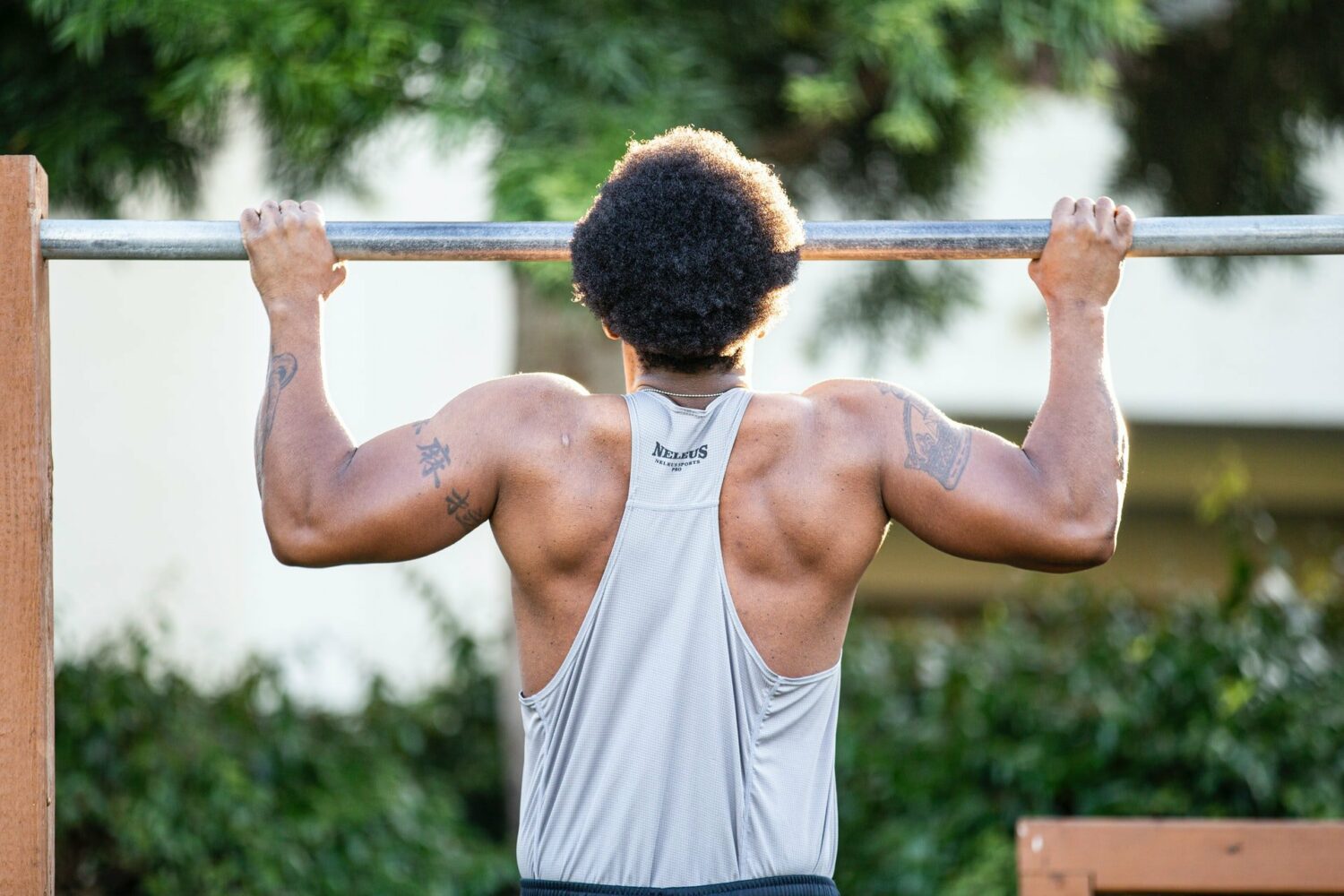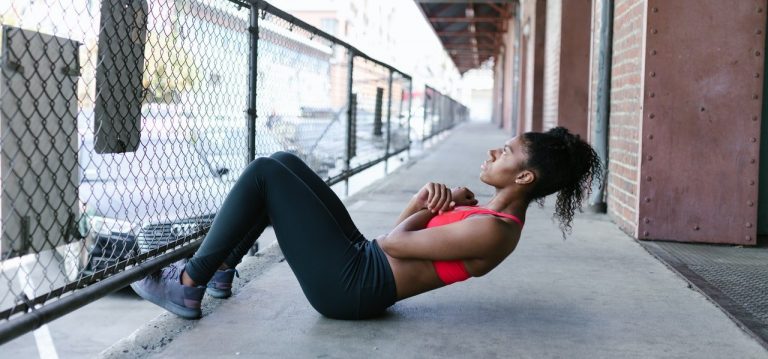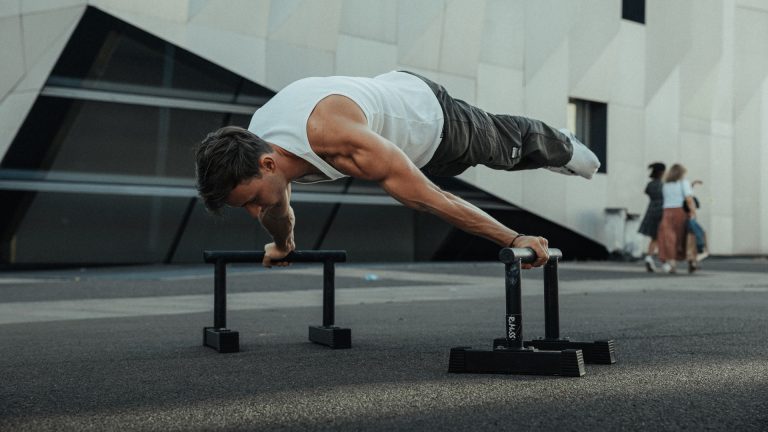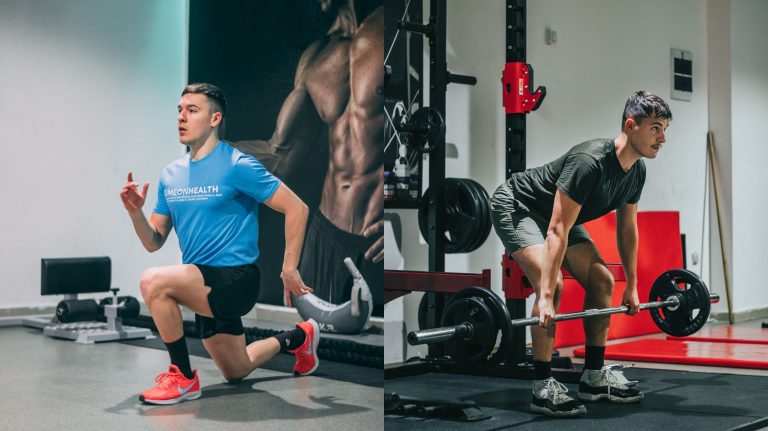Calisthenics 101: Everything You Need to Know
Calisthenics is a very popular type of fitness training that spikes the interest of many individuals who like to train outdoors. Whether you’re hearing the word for the first time, or you are an advanced-level calisthenics trainee, this calisthenics 101 guide can freshen up your perspective.
If you wonder what calisthenics is, think of the guy you see doing pull-ups at the gym. Think of outdoor bar training, lots of guys doing push-up, dips, and muscle-ups, that’s calisthenics. Carved for full-body stabilization, core strength and stability, and balance. The guy doing planche or human flag might be a gymnast or an advanced-level calisthenics practitioner.
What Is Calisthenics?
Calisthenics is a form of fitness training that puts emphasis on functional bodyweight exercises. The main “equipment” used in calisthenics are bars, on which practitioners perform different pushing, pulling, bending, squatting, or isometric exercises.
In calisthenics, we mainly use our body weight as resistance, performing movements against gravity. As a bodyweight training, calisthenics can be done on the ground (think squats, push-ups, and plank) with no bars around, but for the most part, ideally, advanced-level practitioners will train on bars. There are many calisthenics tricks and tips that can help you improve your strength and balance.
Calisthenics, as a form of practice, is fairly popular nowadays, and there are a ton of reasons why. From toning muscle, strength improvements, and hypertrophy to correct posture, higher confidence, and stability, calisthenics offers a ton of benefits.
The History of Calisthenics
Calisthenics comes from the ancient Greek words “kalos” and “sthenost” which mean beauty and strength. The idea is that with calisthenics training we can target both the aesthetic part, the so-called “natural beauty” one gains from training, and strength, or the ability to exert maximal force against resistance.
In ancient times, calisthenics was used for physical preparation in Greece and China. Calisthenics grew so much that there are thousands of competitive events around the world and large federations like “The World Street Workout & Calisthenics Federation” (WSWCF) for it.
Note
Calisthenics may not be the most sophisticated type of training in terms of structure, but it can enhance the performance and functionality of a lifter significantly. Calisthenics introduces full-body stabilization, requires coactivation, and just triggers deeper, newer, not-so-used muscle fibers, helping a lifter to break through a plateau.
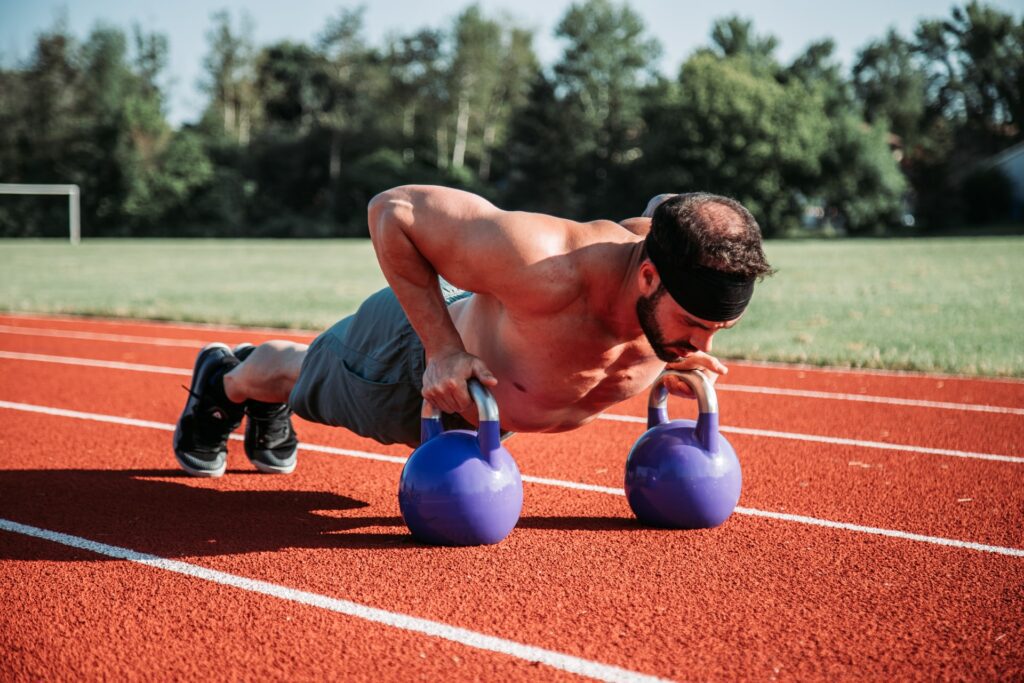
Who Does Calisthenics?
Calisthenics has expanded around the world, being one of the most practical forms of physical exercise in many institutions.
Many individuals in the urban areas go and train together in groups, performing what is called a “street workout”. Also, a lot of gym-goers are attracted to the challenges they can face in calisthenics, as it does require high levels of intramuscular coordination, coactivation, and stabilization.
Calisthenics is also a very popular type of training for military organizations and military units which are often led by a group expert, whether it is a separate coach or an advanced trainee in the group. It is far more efficient than lifting weights, as training in gyms with traveling can get quite expensive.
To be fair, physical education also incorporates a good amount of gymnastics or calisthenics training, which is great for younger individuals to develop stronger and more functional bodies, gain stability, and increase body awareness.
Functional Type Of Training
With slight adaptation, most types of training can be made more functional. But calisthenics is functional in its essence. The training is structured in a way that you can’t escape functional, multi-joint exercises.
But what does functional mean? Functional training incorporates exercises similar to the real moves we perform in everyday life. For example, lots of barbel curls, triceps extensions, or knee extensions on a machine won’t prepare us for the physical challenges we face.
Later we’ll see the functional movement patterns mainly performed in calisthenics. The types of exercise in calisthenics help us do physical tasks daily. For example, the squat and lunge help us do these exact moves, the push-ups and dips allow us to vertically and horizontally push an object, the pull up and rows help us open the door, and so on.
But there’s more to functionality than just performing those exact bodyweight moves. Calisthenics helps us to become more balanced, it increases the stability of the main joints. Some movements also activate core stabilizers and scapular retractors which improve our posture. (1) Then squats and lunges increase the range of motion in the hips, and so on.
Calisthenics vs Weightlifting
As long as we use the muscle to perform the movement, it will adapt. If we stretch it, It will become more flexible, if we produce force to overcome resistance, it will grow and become stronger. So what’s better, weightlifting or calisthenics?
- Calisthenics is primarily bodyweight training, which can be adapted and individualized. This means adding weights is always an option, or making the exercise easier by doing an assisted variation with resistance bands.
- Weightlifting, on the other hand, is far more customizable because it can target more and specific muscles. The manipulation in weight training is easier, and we can always pick the desired weight. In terms of practicality, I’d go with weightlifting.
Research also shows that circuit weight training was significantly better in terms of dynamic strength and muscular endurance gains, compared to calisthenics training for Navy men. (2)
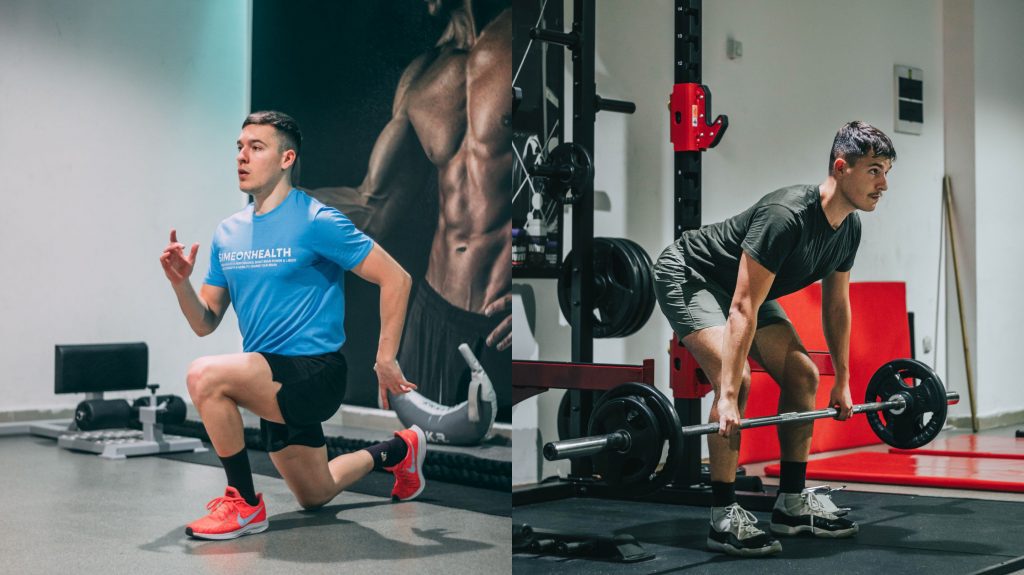
However, calisthenics is a great method for both beginners and advanced practitioners to tone up the body, increase muscle density and break through a plateau. In terms of functionality, calisthenics can, with proper training structure lead to functional strength gain, improved posture, stability, and balance.
The best take on this would be, for maximal hypertrophy and strength gains it is more efficient and practical to lift weights. But calisthenics can tone the whole body, and improve overall functionality, joint mobility, stability, and posture. Ideally, you’d want to combine both of them, to target muscles in deeper ranges of motion, and introduce a little variety to your workout, which produces a better stimulus for adaptation.
Not to put all the functionality on calisthenics, it is worth noting that with proper structure, weightlifting can be made even more functional in some sense. To achieve this we need to focus on more compound exercises (squat, overhead press, bench press, deadlift) and less isolation work. Also throwing some core strength and unilateral stability exercises will do the trick.
key point
The comparison of calisthenics and weightlifting is very individual. With proper structure, calisthenics can be a great tool to strengthen the whole body, and improve stability, balance, functionality, grip, and core strength. Weightlifting is more efficient in terms of hypertrophy training, more practical, and easier to adapt to. Combining both can be a great way to add some complexity to your workouts.
Can Bodyweight Bar Training Help You Gain Muscle?
Yes, you can gain muscle with calisthenics. There is no reason to think you can’t since we use the muscle to overcome resistance. Now the muscle may be used in different motions, it may have to produce more or less force, faster or slower, but nonetheless, it does produce force. These contractions tear the muscle fibers down, which causes inflammation and stimulates an adaptation response, which is muscle growth.
Studies show that low-load bench presses and push-ups have similar efficacy in inducing muscle hypertrophy and gaining strength. The study took 18 men assigned to two groups, either doing 40% RM bench press or adjusted push-ups (for the same load), both performed twice weekly for 8 weeks. Results showed that both groups had similar effects on muscle growth and strength. (3)
Can You Become Stronger with Calisthenics?
Many people believe you can tone the body with calisthenics, but when it comes to pure strength weightlifting is better. Now although there is some truth to this, calisthenics strength differs from the one you get by lifting weights.
In weightlifting, maximal strength can be increased faster as you can stimulate the nervous system more efficiently using exercises such as the squat, deadlift, and bench press. Strength relies on neural adaptation, and stimulating the muscle maximally is crucial.
However, calisthenics can be great for increasing overall body strength. Maybe not that explosive force production like we get with power training, but calisthenics improves complex, full-body functional strength. It improves body awareness, control in space, and stability.
Research shows that with progressive calisthenics push-up training, 23 healthy males were able to significantly increase their 1RM and Push-Up Progression, as in the group performing the bench press. (4) This just shows once again that calisthenic exercises can also increase strength gains.
Can I Improve Balance With Calisthenics?
Performing bodyweight exercises on bars will require good core strength and overall balance. The sooner you learn that the faster your progress will be. Calisthenics is crafted with balance and stability in mind. While weightlifting may or may not be structured for stability, you can’t escape it in the calisthenics world.
Calisthenics was tested on 17 tennis players, for its effect on dynamic and static balance. The experimental group performed bodyweight exercises for 8 weeks, which resulted in significant improvements in static balance, right-to-left standard deviation, and open-to-back standard deviation by 28%, 20%, and 34%, respectively. (5)
Is Calisthenics Good For Fat Loss?
Like any workout, calisthenics will help you burn fat and lose weight. It’s very simple math, you move, you burn calories.
The good effect that is often overlooked, which comes from strength and muscle-building workouts is body composition. When we are standing at a higher muscle mass to fat ratio, the body is more efficient in burning more fat.
So with the same diet, in terms of calories and macronutrients, the individual with higher muscle mass will burn more calories and will use up some of the carbs to replenish glycogen in the working muscle, and protein to build it up.
Research shows that calisthenics can be effective in terms of weight loss, but we need the proper volume and training individualization. (6)
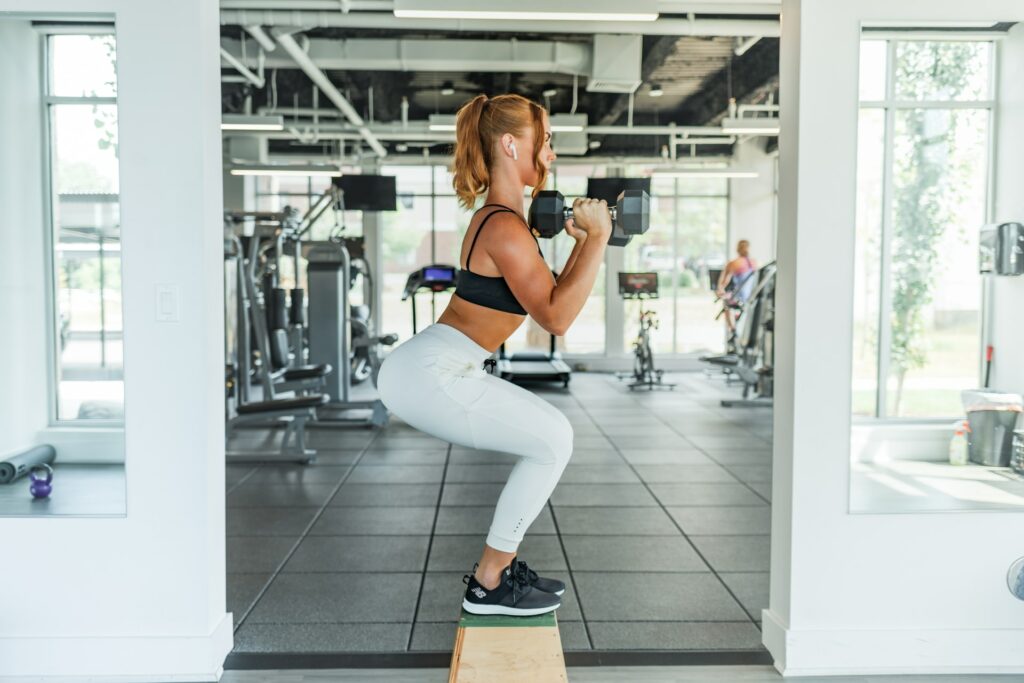
Movement Patterns Classification
Each type of training indulges some type of movement pattern. In certain sports, for example in hurdling or tennis, the movement patterns are very sport-specific. You need to run and jump over the hurdle consistently, or in tennis, you need to swing the racket horizontally.
However, in everyday life, for overall physical health, we need a certain amount of strength and mobility to perform basic tasks. These movement patterns are easy to find in calisthenics training since as we stated earlier, is functional because it involves many multi-joint exercises.
Here’s a brief overview of exercises, movement patterns, and functions:
Pull
Push
Squat
Stabilization
- Pull: Both vertical and horizontal, allow us to bring an object closer to us, to pull something. Whether you need to climb a rock and pull yourself up or open a heavier door, you need these muscles.
- The pulling motion mainly targets your upper back muscles, rear deltoids (shoulder), biceps, and lower back muscles and involves the core.
- Push: Both vertical and horizontal, push helps you to push an object further away. Whether your car broke and you need that extra hand, or you want to lift an object overhead, the push is a very essential movement.
- The pushing motion targets your chest, triceps, and front and middle shoulders mainly, but also incorporates the core.
- Squat, Knee Flexion and Extension, Hip Adduction and Abduction. Ideally, we want to be able to squat deep. All these movements in the hips allow us to walk and carry properly, allow us to bend down and pick things up from the ground.
- These exercises involving legs muscles mainly target the glutes, hamstring, quadriceps, lateral adductors and abductors, calves, and core muscles.
- Stabilization: whether we aim at shoulder or hip stabilization, most exercises in calisthenics target stabilization. It helps us keep balanced and stabilized bodies, helps us stay on the ground, prevents falls, and carry objects the proper way.
- Whether we try to do a pull-up and move up by equally activating the right and left upper back muscles or we do a one-legged deadlift, stabilization is trained with calisthenics. Stabilization targets more of the deep, unused muscles by allowing coactivation and improving intermuscular coordination. The aim is to be balanced, prevent injury, and increase stability.
The Big Calisthenics Minus
The big minus of calisthenics is training for legs. If you include no weights, it is quite hard to manipulate the bars-only bodyweight exercise to proportionally gain a good amount of muscle in the lower body. The upper body muscles don’t do that much on daily basis, and gaining strength only in your upper body is not as functional and proportionate, as increasing full body musculature.
This is because with progressive training the load you can lift by doing dips, push-ups, and pull-ups increases, but lower body musculature doesn’t increase that much. Your legs won’t grow to such an extent by only doing bodyweight squats, since they already work to support your body weight on a daily basis.
Pro Tip
Doing calisthenics is a great additional tool to spice up your workout complexity, but in my opinion, I would add weights to lower body training. It just makes things easier and more practical.
Calisthenics Exercises: Beginner, Intermediate, Advanced
Every individual is at a certain fitness level. Someone can run more, and someone can lift more, but as you may have seen, bigger and bulkier muscles don’t always mean better calisthenics performance. In fact, the bigger we are the more weight we need to carry, push, pull or lift during a bar training session.
Since calisthenics is quite complex and slightly harder to adapt and customize, we need to look at what level are we, in terms of exercise metrics. For example, if we aim at hypertrophy we can be able to do 8-12 reps, while if we aim at strength, 3-5 reps per set. This means if I can do a maximum of 5 pull-ups, I need to adapt the exercise if my main target is muscle hypertrophy, so I can do more reps.
Beginner
Intermediate
Advanced
In the first or beginner level, there are many adapted exercises in all the movement patterns, that are easier to be done. This allows us to do more reps in a given set. One great way to spice up a workout for beginners is by introducing resistance bands and using them to give assistance for certain exercises.
- Push: Kneeling Push-up, Wall Push-Up, Close and Wide Grip Incline Push-up, or Incline and Kneeling Pike Push-Up and Push-Up Negatives (just eccentric)
- Pull: TRX Pull, Inverted Row Horizontal Pull-Up, Parallettes Pull-Up, Negatives Pull-Up (just eccentric), Resistance Band Assisted Pull-Ups, Scapular Retractions, and Bar-Holds.
- Legs: Box Squat, Half Squat, Wall Isometric Squat Hold, and Standing Crab Walk
- Core: Crunches, Dead Bug, Plank, Knee Tucks, Anti-Rotation, and Side Crunches
At a medium level, we have amateur weightlifters, ex-athletes, and amateur calisthenics trainees who’ve progressed. Here we mainly go for regular, bodyweight exercises with less assistance.
- Push: Triceps Push-Up, Bar Pike Push-Up, Wide Grip Push-Ups, Regular Push-Up, Dips, and Decline Push-Up
- Pull: Regular Pull-Ups, Close and Wide Grip Pull-Ups, L-Pull Up, Chest to Bar Pull-Ups and Pull-Up Holds.
- Legs: Standard Squat, Squat-Pulse-Jump, Resistance Bands Crab Walk (hip abduction), Archer Squats, and Close to Wide Stance Squats.
- Core: Plank, Leg Raises, Abs Roll-Out, Hanging Knee Raises, V-ups, Side Plank, Crunch Kicks, Knee-To-Elbow
At this level, we have experienced calisthenics practitioners, pro athletes who train for strength, and gymnasts. Here we may also add weights or progress to some of the pro-level exercises like the front level, human flag, and planche, although these are isometric exercises.
- Push: Weighted Dips, Weighted Push-Ups, Weighted Decline Push-Ups, Resistance Bands Close-Grip Push-Ups, Handstand Push-Ups, and One-Hand Push-Ups
- Pull: Weighted Pull-Ups, Muscle Ups, One-Hand Pull-Ups, Ring Muscle Ups, Close Grip Chest-To-Bar Pull-Ups and Slow Pull-ups
- Legs: Kettlebell Lunges, Goblet Squat, Romanian Deadlift, Squat variations with Weights, Farmers Walk, One-Legged Dumbbell Deadlift, Box Jumps, Deficit Reverse Lunge, Bulgarian Split Squat, Pistol Squats, and Wall Isometric Plate Squats.
- Core: Weighted Plank, Front Lever, Human Flag, Turkish GetUp, L-Sit, Decline Plank, and Hanging Leg Raises.
Conclusion
Calisthenics is a bodyweight training method that incorporates large muscle mass and has many positive effects on the body. From improving strength, stability, body awareness, and posture, calisthenics can be a great tool to improve your fitness level. Adaptability depends on your creativity. Usually, beginners start with assisted (resistance bands) exercises and bodyweight training, progressing to the intermediate level with higher volume and tougher exercises. The last level is advanced, for which adding weights, doing progressions and isometric work is crucial.
Frequently Asked Questions
What are the potential benefits of calisthenics?
Some of the main calisthenics benefits that come with training are: increased core strength and stability, overall muscle growth, increased strength, improved coactivation, improved body composition (BMI), increased grip strength and posture (with proper back exercises).
What are progressive exercises or progressions?
Progressions are harder variations of a specific exercise. They are meant to challenge our current strength and stability, and with enough training we can progress through, to another harder variation. Progressive exercise can be harder variations of a given exercise (position-wise), or they can add weights, or require more balance that makes the exercise harder to perform.
Is core activation important in calisthenics?
Core activation is another crucial part of bodyweight and weight training in general. With a weak core, it is hard to keep our spine neutral and increase intra abdominal pressure (IAP) which is important to reduce the gravitational forces on the spine. The core is a key component of a strong body, it is where the strongest bridge/connection of lower and upper limbs goes through. It helps us to stop, speed up, change direction, balance our body and exert force.

